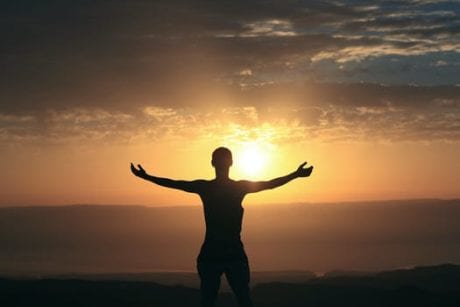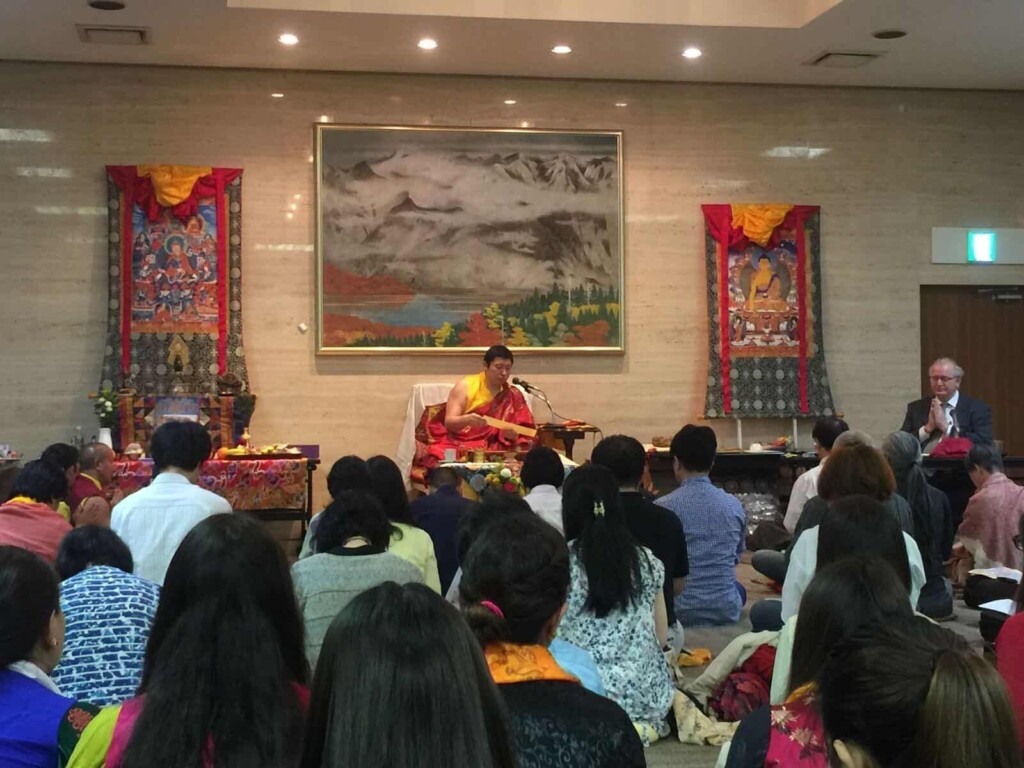Understanding Our Ground
Understanding the ground is the first step towards meditation practice. When we begin to learn meditation, we need to start with the base or the ground. First, we should learn not just how to meditate, but also why we need to meditate. What is the base? Kyabgön Phackchok Rinpoche often emphasizes that this first step is crucial.
In this audio clip from an introduction to meditation session taught in Japan, Rinpoche explains how we should approach meditation. For more detailed and step-by-step meditation instruction, we encourage you to explore The Path of Meditation Level One support program available here.
Phakchok Rinpoche explains that we really need to ask certain questions before we engage in the practice. These questions help us understand the ground for our practice. Therefore, he reviews the kinds of questions we should raise: “What is the basis of Dharma?”
Questions To Raise
Understanding the ground means that we ask the following questions:
What is Dharma?
Then, what are the reasons for practicing Dharma?
Do we really need to meditate?
How should we meditate?
When should we meditate?
And where to meditate?
Finally, What is the benefit?
These are not just normal questions—we are taking a very important step when we ask these questions. We don’t just ask questions and then forget about it. Instead, we need to find the answers. And we don’t just wait for someone to tell us everything. Instead, we need to practice to get some answers. Also, as we investigate, and as we actually do the practice, the answers will be even deeper. The more experience we have in practice, the clearer we find the answers.
What is Dharma?
Rinpoche gives a short answer to these questions. What is Dharma? Dharma is transforming the mind. And we need to really understand what we mean by transforming—that means change.
What Are the Reasons for Practicing Dharma?
The reason for practicing Dharma is to come to see that the mind creates both suffering and happiness. We will observe that when we are angry, our minds are involved. Similarly, when we’re happy—our minds are involved. And if we meditate and our mind is unhappy, then that meditation becomes a slightly “unhappy meditation.” If we have doubts when we meditate, that session of meditation is tinged with doubt. And, if we have a small amount of compassion, then our meditation is slightly compassionate.
Mind as P rojector
rojector
By observing this, we can understand that our minds are the main projectors—the mind is controlling our experience. Once we really come to experience that—then meditation is truly important. But until we see that, then meditation seems unimportant.
Again, the reason for practicing meditation is to change our minds.
Do we Really Need to Meditate?
Yes, Rinpoche tells us, if we examine our situation, then we really do. Why? Because our minds are endless. Our minds don’t stop thinking—it is an unending process. And we have no real control—we just keep thinking. We keep spinning stories and there’s never a pause for resting.
Do we really need to meditate? Yes, Rinpoche says, because we have the habit of thinking. But, we might wonder—is this habitual thinking something bad? Yes—because the habit of thinking is the basis for anger. When we aren’t thinking, then where is the anger? Thus, when we aren’t thinking, the habits aren’t there.
How to Meditate
In the simplest explanation, we meditate by bringing our mind to a single focus. We give our minds one simple job to do instead of letting it run uncontrolled.
When Should we meditate?
Before breakfast is the best time but the actual hour depends upon our own schedule. There is no specific magic hour! But, when our stomachs are empty, Rinpoche explains, then our minds are fresh.
Where Should We Meditate?
If we have a shrine or altar, then we may find inspiration to meditate there. That is excellent. However, if you don’t have a shrine, or if you are traveling, then wherever you are, that is a meditation place. Simply sit, and meditate.
Transformation is the Key
These are the most simple answers to our questions about meditation. Then, Rinpoche explains that he can go deeper with his answers. But first, we need to start with this basis. And the core principle we may remember is that Dharma is about mind transformation. Then, if we keep that intention of transformation, any Dharma activity we do—praying, meditating, going to ritual ceremonies—anything we do like that transforms our mind.
Exploring Your Own Answers
Finally, Rinpoche encourages us to find our own answers to these questions by practicing. As we take the time to meditate, we may find that the answers come naturally. And, our minds will be more open and receptive to the truths we discover.
Reflection Exercise
Spend some time this week giving your mind one simple job–one simple focus, as Rinpoche suggests.
Traditionally, we focus on a visual object because sight is so important to us. We gently rest our gaze on one thing–it can be a stone, a flower, an image, or a statue. We don’t need to stare fixedly at our object–that will just give us a headache! Instead, simply allow our eyes–and thus, our mind, to have a place to settle. Start by doing this for just a few minutes, and then relaxing.
When we begin to practice meditation, we shouldn’t push or try too hard. If we strain ourselves we might become discouraged. Simply sit for a few minutes and watch how our minds settle and then move away. We’re taking a pause here for resting our minds.
If your mind wanders from the object, simply notice that. Then gently, return to the object. You are not analyzing it or investigating it–just letting your mind rest there. How does that feel? What happened?










Responses
Excellent advice here, if we know why we do something then it makes that act more meaningful. If we can see the benefit in something then we are likely to continue. This principle applies to dieting, exercise etc and certainly helps with a meditation practice which can sometimes be difficult to maintain.